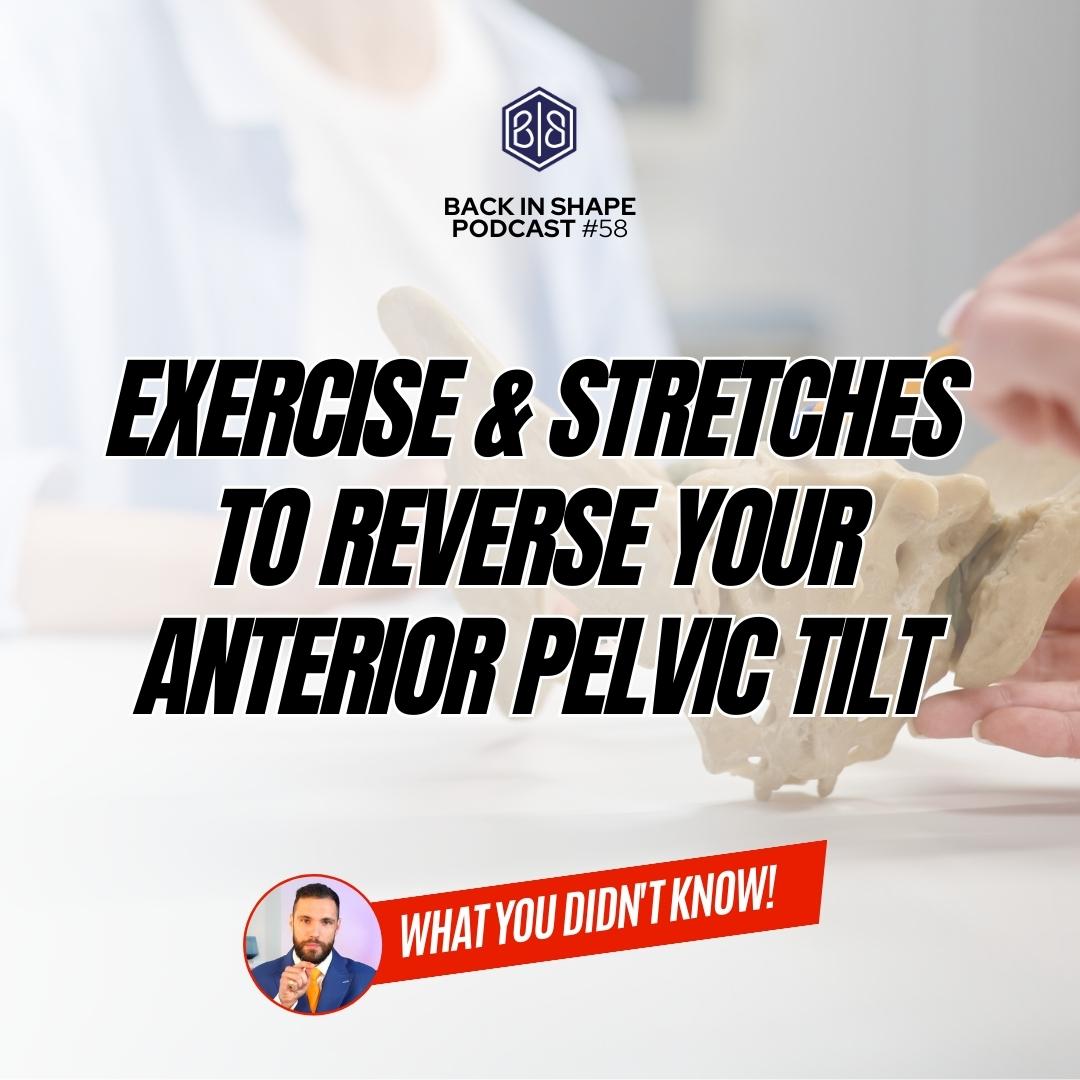In Order to Fix Anterior Pelvic Tilt You Must Know The Following
When it comes to anterior pelvic tilt there are a few simple concepts you should focus on before you even consider trying to change anything:
- To what degree does your pelvis have ‘anterior rotation’ in the normal upright position.
- Ligament imbalances will lead to the maintenance of the anterior rotation and resultant hyperlordosis (under typical circumstances).
- Short tight hip flexors and lumbar erectors are usually a maintaining factor.
- Weak, elongated hamstrings & rectus abdominis muscles are also a maintaining factor.
In the rest of this article we discuss how to address these factors and if you’re interested in this topic, and making measurable change in terms of alignment, you should definitely see our alignment video on YouTube when you’re done!
Do You Have Anterior Pelvic Tilt (APT)
This “condition”, if you would call it that, is simply a misalignment of the spine and or pelvis. At The Mayfair Clinic, we always work to be as specific as possible which is why we measure this very accurately on X-Ray. To first identify whether or not you have APT, the practitioner must know what “normal” is. We have strict guidelines in the clinic as to what constitutes normal and what is unacceptable. In order to establish normal we refer to a large body of published research on spinal structure, bio-mechanics and alignment.
Having a strong basis in published research as well as clinical experience assessing, treating, and reversing anterior pelvic tilt is important. Too many times we have seen patients which have wrongly been diagnosed with this issue, which can commonly co-occur with back pain, and then have been given incorrect advice or treatment. APT should in our opinion always be diagnosed properly. If you feel you may have “APT” or aren’t quite sure, contact us to see if we can help.
How Do You Fix Anterior Pelvic Tilt?
The second video on this page of course reveals the very simple exercises that need to be done to combat this issue. But in short, we are looking to the imbalance in the muscular “pulley system” that hangs from the spine & pelvis and runs into the legs. APT often is associated with a shortening and tightening of muscles like Psoas and Rectus Femoris. These “hip flexors” overpower the muscles on the opposing side of this system, the hamstrings in particular. Our main goal in this rehab section is to address these muscles and work to re-balance them, which does take time and commitment.
There are additional treatment avenues that can enhance the corrective process in clinic. It cannot be stressed enough though, that anterior pelvic tilt is commonly a condition that is caused by repeated stress and strain. This is to say, it requires a degree of understanding by you, the patient to truly fix it.
What Role Do the Abs have in Anterior Pelvic Tilt?
Quite often, due to desk-based work and a sedentary lifestyle, your abs become weakened and “loose”. This allows your pelvis to drop forward more easily as a result of the imbalances we just discussed. By strengthening and restoring the stability to the abs, we can help build back the balance you have lost as a result of your APT.
Back Pain & Anterior Pelvic Tilt
We have specifically chosen to avoid ab exercises like leg raises and normal plank or sit-ups because quite often, the position your spine adopts when APT is present is one which leads all too often to back pain and compression of the spine. The combination of compression & shearing forces as the spine is ‘slipping of the base of your sacrum’ due to a steeper than usual slope leads to forces that maintain back pain. Although it is highly unlikely that a ‘slip’ will occur, the forces in the ‘transverse plane’ of the disc are still present. Exercises such as leg raises, planks and sit-ups, work to further increase compression through the disc, most significantly at the L5/S1 segment of the lower back. Avoiding this, where possible, is helpful in the short term if your anterior pelvic tilt is coinciding with an unfortunate episode of lower back pain.
By selecting specific exercises to support the abs and their development safely, you are able to prevent progression in related back pain whilst improving the underlying problem.
Help is at Hand!
If you are suffering from APT, or you think you are we recommend a few specific steps.
If you are confident in your previous diagnosis, try the exercises in the video above and see if things improve (they should)
If they don’t – you likely have the wrong diagnosis or need treatment to deal with any inflammation or tissue damage.
Contact us to have a brief discussion about how you were diagnosed with this, or about how we can help you by providing treatment, extensive analysis, and measurement or preferably both.
Fix Your Back Pain From Home
If you’re looking for a way to get rid of the anterior pelvic tilt to help your back pain then make sure you take a look at our Back In Shape program which has all you need top really fix the source of your lower back pain.
Contact Us.
Email Us
info@themayfairclinic.com
Call Us
0203 947 32 22
Clinic Address
4 Cavendish Square, London, W1g 0PG.
